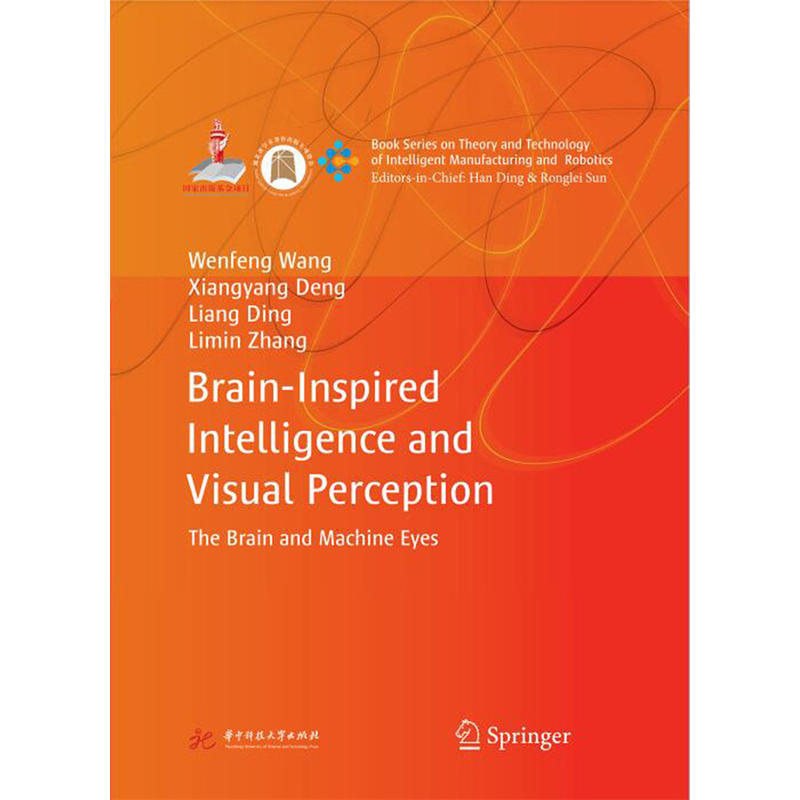
Brain-Inspired Intelligence and Visual Perception

温馨提示:5折以下图书主要为出版社尾货,大部分为全新(有塑封/无塑封),个别图书品相8-9成新、切口有划线标记、光盘等附件不全详细品相说明>>
- ISBN:9787568050791
- 装帧:一般胶版纸
- 册数:暂无
- 重量:暂无
- 开本:16开
- 页数:166
- 出版时间:2019-03-01
- 条形码:9787568050791 ; 978-7-5680-5079-1
本书特色
In the 19th century, Spanish anatomists founded the theory of neurons. With the development of brain science, the biological characteristics of neurons and related electrical properties have been discovered. The advent of mathematical methods to simulate the actual human neural network in 1943 can be recognized as one of the notable landmarks. 63 years since then, deep neural networks were proposed and developed to simulate the structure of the human cerebral cortex. The emergence of deep learning has a great influence on the traditional artificial intelligence and enhanced the importance of brain-inspired intelligence in the whole field of artificial intelligence. This is a great dream into reality!
内容简介
In the 19th century, Spanish anatomists founded the theory of neurons. With the development of brain science, the biological characteristics of neurons and related electrical properties have been discovered. The advent of mathematical methods to simulate the actual human neural network in 1943 can be recognized as one of the notable landmarks. 63 years since then, deep neural networks were proposed and developed to simulate the structure of the human cerebral cortex. The emergence of deep learning has a great influence on the traditional artificial intelligence and enhanced the importance of brain-inspired intelligence in the whole field of artificial intelligence. This is a great dream into reality!
目录
作者简介
Wenfeng Wang is currently the leader of a CAS “Light of West China” Program (XBBS-2014-16) and has been invited as the director of the Institute of Artificial Intelligence, the College of Brain-inspired Intelligence, Chinese Academy of Sciences (to be set up in Nov. 2017). He also serves as a Distinguished Professor and the academic director of the R&D and Promotion center of artificial intelligence in the Robot Group of Harbin Institute of Technology, Hefei, China. His major research interests include functional analysis and intelligent algorithms with applications to video surveillance, ecologic modelling, geographic data mining and etc. He is the editor in chief of the book COMPUTER VISION AND MACHINE COGNITION (in Chinese), which has been published by Beihang University in China. Wenfeng Wang is enthusiastic in academic communications in any way and he served as PC members and Session chairs of a series of international conferences associated with the brain-inspired intelligence and visual cognition, including the 2017 IEEE International Conference on Advanced Robotics and Mechatronics, the 2017 International Conference on Information Science, Control Engineering and the 3rd International Conference on Cognitive Systems and Information Processing and etc. Xiangyang Deng is currently a full assistant professor with the Institute of Information Fusion, Naval Aeronautical University, Yantai, China. His current research interests include video big data, deep learning and computational intelligence. Xiangyang Deng has rich experience in R & D management. He won 3 First Class Prizes and 2 Third Class Prizes of Military Scientific and Technological Progress Award. He published 9 papers about the topics in the past 3 years while 5 of them were indexed by SCI, EI. He contributed to a monograph SWARM INTELLIGENCE AND APPLICATIONS (in Chinese), which was published by National Defense Industry Press. He has 2 patents and obtained 3 items of software copyright. Liang Ding is currently a full Professor with the State Key Laboratory of Robotics and System, Harbin Institute of Technology, Harbin, China. His current research interests include intelligent control and robotics, including planetary rovers and legged robots. Dr. Ding was a recipient of the 2017 ISTVS Söhne-Hata-Jurecka Award, the 2011 National Award for Technological Invention of China and the 2009/2013/2015 Award for Technological Invention of Heilongjiang Province. He received the Hiwin Excellent Doctoral Dissertation Award, the Best Conference Paper Award of IEEE ARM, and the Best Paper in Information Award of the 2012 IEEE ICIA Conference. Liang Ding is an influential scientist in intelligent control of robots and has published more than 120 authored or co-authored papers in journals and conference proceedings. Limin Zhang is currently a Full Professor and Tutor for Doctor with the Institute of Information Fusion, Naval Aeronautical University, Yantai, Shangdong, China. He was a senior visiting scholar at university college london (UCL) Modern Space Analysis and Research Center (CASA) from 2006 to 2007. His current research interests include signal processing, Complex system simulation and computational intelligence. More than 180 papers are published and 80 papers are indexed by SCI, EI. 2 monographs are published and 20 patents are applied and 6 were authorized. Limin Zhang has won two Second Class Prizes of National Scientific and Technological Progress Award and five First Class Prizes of Military Scientific and Technological Progress Award. He has been selected as outstanding scientists in national science and technology and millions of talents in engineering research field and he is enjoying special allowance from the State Council.
-

勒维特之星-大发现系列丛书
¥4.0¥16.0 -

喜马拉雅山珍稀鸟类图鉴
¥23.8¥68.0 -

昆虫的生存之道
¥19.1¥38.0 -

古文诗词中的地球与环境事件
¥8.4¥28.0 -

昆虫采集制作及主要目科简易识别手册
¥20.5¥50.0 -

声音简史
¥18.7¥52.0 -

物理学之美-插图珍藏版
¥30.4¥69.0 -

不匹配的一对:动物王国的性别文化
¥13.7¥42.8 -

技术史入门
¥20.6¥48.0 -

现代物理学的概念和理论
¥23.1¥68.0 -

图说相对论(32开平装)
¥19.8¥46.0 -

数学的魅力;初等数学概念演绎
¥13.0¥22.0 -

数学专题讲座
¥11.0¥29.0 -

改变世界的发现
¥15.4¥48.0 -

为了人人晓得相对论
¥4.6¥13.5 -

舟山群岛植物图志
¥20.1¥59.0 -

宇宙与人
¥10.5¥35.0 -

布尔巴基-数学家的秘密社团
¥11.4¥38.0 -

一代神话:哥本哈根学派
¥6.7¥15.5 -

考研数学高频考点精选题
¥1.2¥3.2











